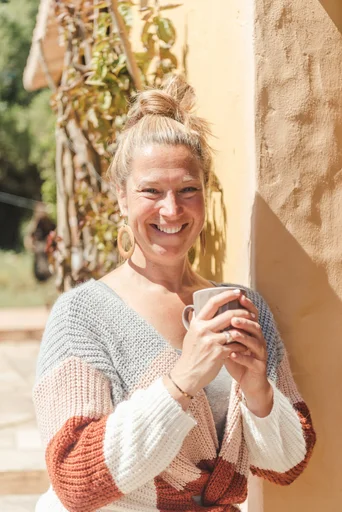Eagle Pose: How to Practice Garudasana - Yoga Journal

Welcome to Your Yoga Journal
Welcome to your Yoga Journal, where we delve into the enriching practice of Eagle Pose and its profound impact on your physical and mental well-being. In this guide, you will gain a comprehensive understanding of why Eagle Pose matters and what you can expect to gain from this insightful exploration.
Why Eagle Pose Matters
Eagle Pose, also known as Garudasana, offers a myriad of benefits that contribute to improved overall health. According to Ayurveda perspective, this pose helps in improving concentration, focus, and balance while serving as a stress buster. Additionally, it intensely stretches the shoulders and upper body area, aiding in the removal of stiffness and reduction of shoulder pain.
The practice of Eagle Pose is renowned for enhancing flexibility and balance by engaging various muscle groups. Regular practice leads to increased suppleness in the hips, shoulders, and thighs. Moreover, it improves balance and focus while stretching around the shoulders, upper back, and thighs. This meditative pose opens the hips, maintains natural body alignment, compresses lymph nodes for healthy circulation, and raises heart rate.
Benefits of Garudasana
Improves balance
Strengthens core and legs
Increases shoulder and hip mobility
Builds breath awareness
Stretches upper back
What You'll Gain from This Guide
In this guide, you will gain practical insights into mastering Eagle Pose, including step-by-step instructions for safe practice. You will also discover valuable tips and modifications tailored for beginners to make this empowering pose accessible. Furthermore, we will explore how incorporating Garudasana into your routine can lead to progress tracking and holistic well-being.
The Basics of Eagle Pose

Understanding Garudasana
Garudasana, also known as Eagle Pose, holds a significant place in the realm of yoga. This challenging balance pose is quite common in contemporary yoga classes, whether it's vinyasa, hot yoga, or Iyengar. The name "Garudasana" is derived from two Sanskrit words - "Garuda," meaning 'Eagle,' and "Asana," meaning 'Meditative Pose.' In Hindu mythology, Garuda is a bird creature, half eagle and half human, known as the “King of the Birds.” He represents birth and heaven and is associated with the sun and fire. This pose focuses on areas of the body such as hips, lower back, and legs.
The historical significance of Eagle Pose dates back centuries but didn’t always take its current form. In the early Hatha Yoga text Gheranda Samhita, written around 1700, it was a sitting posture more like what we now know as Hero Pose. The 19th-century text Sritattvanidhi illustrates it as similar to a Standing Figure Four, with the ankle crossing the thigh of the bent leg and the hands in prayer position.
Physical and Mental Benefits
The practice of Garudasana offers numerous benefits when performed with correct orientation. Regular practice may provide strength, self-control, elegance, improved concentration, focus, balance while serving as a stress buster. It aids in improving breath awareness and stretches the shoulders and upper body area to reduce stiffness and shoulder pain.
As a power animal associated with wisdom, freedom, intuition, courage, and vision in ancient tradition, the Eagle pose inspired by Garuda itself is a beneficial practice for the body, mind, and energy.
Preparing for Your Practice
Before diving into your practice of Eagle Pose, it's essential to prepare both your body and mind. Engaging in warm-up poses that focus on hip opening and shoulder mobility can help loosen up these areas before attempting Garudasana. Setting your space by ensuring a quiet environment free from distractions will aid in focusing your mind during this meditative practice.
How to Practice Garudasana Safely
Now that you are mentally and physically prepared, let's delve into the step-by-step guide for practicing Garudasana or Eagle Pose safely.
Step-by-Step Guide to Eagle Pose
Starting Position
Begin standing tall in Mountain Pose (Tadasana), grounding your feet firmly into the earth. Lift your chest and roll your shoulders back, engaging your abdominal muscles for stability.
Moving into the Pose
Shift your weight onto your left foot and lift your right knee towards your chest.
Cross your right thigh over the left thigh, hooking the top of your right foot behind the left calf if possible.
Extend your arms forward and cross the right arm under the left at the elbows, bringing the palms together.
Finding Your Balance
Focus on a point in front of you to maintain balance as you sink deeper into the pose. Keep a steady gaze and breathe deeply to center yourself in this challenging yet rewarding posture.
Common Mistakes and How to Avoid Them
Alignment Tips
Ensure that your standing leg is strong and stable throughout the pose.
Keep the hips squared and avoid leaning to one side.
Maintain an open chest by drawing shoulder blades down and back.
Adjustments for Stability
If you struggle with balance, practice near a wall or use a chair for support. Gradually work on deepening the pose as you build strength and stability.
By following these steps mindfully, you can safely practice Garudasana with confidence, reaping its numerous benefits while minimizing any risk of injury.
Tips and Modifications for Beginners

As a beginner, making Eagle Pose (Garudasana) accessible is essential to ease into this challenging yet rewarding asana. Here are some tips and modifications to help you embrace this empowering pose with confidence.
Making Eagle Pose Accessible
Props and Alternatives
Using props such as yoga blocks can provide support and stability, especially if you struggle with balance or strength. Placing a block under the foot that wraps around the calf can assist in finding balance while maintaining proper alignment. Additionally, opting for alternatives like crossing the top leg over the standing leg without wrapping it around can still offer a balance and stability challenge, allowing you to hold the posture comfortably.
Listening to Your Body
It's crucial to listen to your body and honor its limitations. If forcing the double leg wrap feels unnatural or uncomfortable, consider modifying the pose by crossing your top leg over your standing leg and holding the posture from there. This modification can present an even greater balance and stability challenge than traditional Eagle Pose, allowing you to gradually build strength and stability.
Practice Makes Perfect
Incorporating Garudasana into your routine consistently is key to mastering this pose. Regular practice not only enhances flexibility and balance but also improves focus, postural awareness, and body alignment. As you entwine your arms and legs in this asana, it engages various muscle groups, encouraging them to stretch and loosen up. By practicing this posture regularly, you will notice increased suppleness in your hips, shoulders, and thighs, leading to improved overall flexibility.
Tracking Your Progress
As you continue practicing Eagle Pose, take note of your progress over time. Notice how your sense of balance improves, offering greater poise in both physical movements and mental composure. Whether it's through enhanced stability or increased flexibility, tracking your progress can be incredibly motivating on your yoga journey.
See Also
Exploring Brahmacharya Yoga: Asana, Chant, Hand Gesture | Yamas & Niyamas
Newbie's Handbook for Kundalini Yoga - Yoga Journal
Living the Yamas: Understanding Yoga Sutra of Patanjali - Yoga Journal
Satya Yoga Flow: Asana, Chant, Hand Gesture, Contemplation | Yamas & Niyamas
Dive Deeper into Anjali Mudra (Salutation Seal) | Yoga for Newbies
We bring back the importance of initiation into womanhood by Roos-Veerle Krijnen & Ella-June Henrard
Welcome to the Women’s Initiation Retreat by Naked Truth Retreats, a transformative journey into the depths of your True Feminine Nature. This retreat, scheduled from 17th to 24th August 2024 in Portugal, invites you to remember the sacredness and wholeness of your being.
Roos-Veerle Krijnen & Ella-June Henrard



